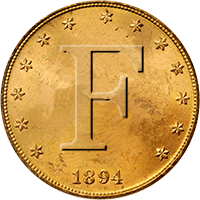I have heard this before. I don’t discount your experience with it. My experience has been quite different.Does the Manticore have a 2 tone ferrous/non ferrous default audio setting? Yes. Is it similar to the Etrac TTF in performance? Thankfully, NO.
2 tone ferrous was one of my least favorite audio settings on the Etrac. The ferrous tone/reactivity was ridiculously overpowering and slow to react. Could I find targets using TTF? Sure. Was I missing a ton of non ferrous targets? Absolutely, after going behind my Etrac with a Nokta Legend, Deus 2 and Manticore. Those missed targets were not deep, they were mid depth to shallow and were partially masked but they were masked enough for the Etrac in TTF to completely miss them by calling them ferrous. Throw in moderate to high iron mineralization and TTF was basically unusable. TT Conductive I could almost deal with.
Manticore's 2 Tone/2Region audio setting can be made to sound very much like the Etrac's TTF. On the Manticore's 2 tone, 2 region setting, you can adjust the volume levels for the ferrous and non ferrous tones, you can adjust the pitch of the ferrous and non ferrous tones and you can adjust the tone break. You can use the Normal or Enhanced audio setting to change the susceptibility to EMI and smaller target detection. You can use Simple, Medium or Rich tone Profiles to change the level of tone modulation. You can change the recovery speed a lot to change the tone lengths of ferrous and non ferrous tones and their reset time. You can change the upper and lower iron boundaries to get really granular iron bias settings. You can also stay in 2 tone, 2 regions and switch to Depth tones which is a VCO type ferrous/non ferrous audio that is extremely fast. You also have All Terrain General for basic hunting, All Terrain Fast for hunting in thick trash, All Terrain Low Conductors for concentrating more on targets below zinc pennies in conductivity and you have All Terrain High Conductors for concentrating on targets near and above zinc pennies in conductivity. You can also play around with the reference threshold if you want to not hear ferrous tones but instead just want to hear the threshold tone null over ferrous responses.
I have one old homestead close to me I have hunted too many times to count. Gridded from two different directions as well as diagonally. The first few years with ttf. Then I thought let’s see what I missed. Used Bills trashy park program. 2 tone conductive. Emmy’s 110. Others that escape me at the moment. I have not been able to pull anything else out after all these years. First couple years with ttf I found close to 50 coins, copper and silver from this homesite.
I religiously dug anything remotely iffy. I can honestly state I can count on one hand the number of times I was fooled. 99.999% of the time if it sounds junky and the ferrous/conductive scale numbers back it up that is what it is.
When I watch various manticore YouTube videos of actual hunts. Not coins mixed at varying distances and depths on boards. It seems people are digging A LOT of trash. Ferrous and conductive. The TDI numbers are all over the board. Jumping up and down on the scale entering silver territory for wheat cents and vis versa. Now some will say it is because numbers are being influenced by proximity to ferrous/conductive trash. I don’t discount that but often the only conductor that is unearthed is what was the impetus for digging in the first place.
This observation appears ubiquitous with the whole line of 600/800/900+manticore. Tones are extremely important. But with the etrac it seems ferrous/conductive numbers and their relation to the target are much more complementary. That is what I am looking for in my next detector.


